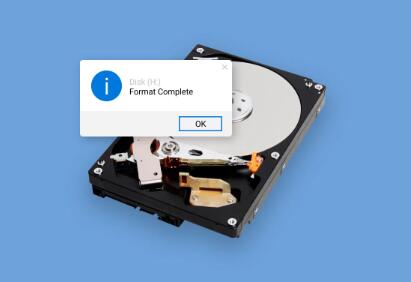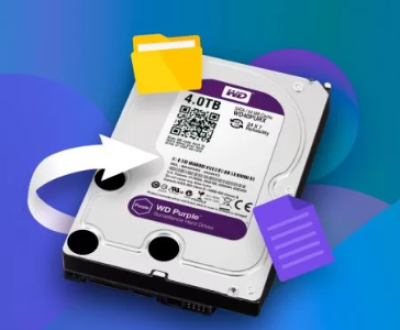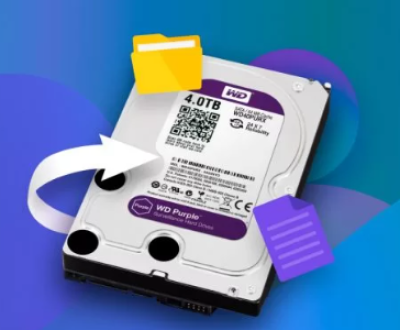Recovering deleted data from a hard disk can be a complex process, but there are several methods and tools available that can increase the chances of successful recovery. Here are the common ways to recover deleted data from a hard disk:
Method 1: Use Built-in Recovery Tools in the Operating System
Windows Recycle Bin: In Windows, when you delete a file, it usually goes to the Recycle Bin. To recover deleted files from the Recycle Bin, simply open it, locate the files you want to restore, right-click on them, and select “Restore”. The files will be returned to their original locations.
Mac Trash: On a Mac, deleted files are moved to the Trash. To recover them, open the Trash, find the desired files, and either drag them back to their original locations or right-click and select “Put Back”.
System Restore: Both Windows and Mac have system restore features. In Windows, you can use System Restore to revert your system to a previous point in time when the data was still intact. On a Mac, Time Machine can be used to restore files and system settings to a previous state if it has been enabled and configured.

Method 2: Utilize Third-Party Data Recovery Software
Panda Assistant is a powerful data recovery tool designed to help users retrieve lost or deleted files from various storage devices, including hard drives, USB drives, memory cards, and other storage mediums. This intuitive software provides an easy-to-use interface, making it accessible for both beginners and advanced users. Whether you’ve accidentally deleted an important file, formatted a drive, or experienced a system crash, Panda Assistant offers a range of recovery solutions to help you restore your lost data.
One of the key features of Panda Assistant is its ability to recover files from different file systems, such as NTFS, FAT32. exFAT, and more. It supports a wide variety of file types, including documents, photos, videos, audio files, and more, ensuring that you can recover a vast range of lost data. Additionally, the software provides advanced scanning options that allow you to search for lost files on both internal and external drives.
The program also boasts a preview feature that enables you to view the recoverable files before restoring them, helping to ensure you retrieve the correct data. Panda Assistant’s deep scan function is particularly useful when dealing with more complex data loss situations, as it thoroughly searches for files that may not be immediately visible through a standard scan. This can be invaluable in cases where files have been overwritten or are hidden due to system corruption.
Method 3: Seek Professional Data Recovery Services
When to Consider Professional Services: If the data is extremely important and the above methods fail to recover it, or if the hard disk has physical damage such as clicking noises, strange vibrations, or if it is not recognized by the computer, it is advisable to seek professional data recovery services. Professional data recovery companies have specialized equipment and expertise to handle complex data recovery scenarios.
Choosing a Professional Service: When selecting a data recovery service, do some research. Look for companies with a good reputation, experienced technicians, and proper certifications. Check online reviews and ask for recommendations from friends or colleagues who have used such services before. It’s also important to get a clear estimate of the cost and the recovery time before handing over your hard disk.
Method 4: Recover from Backup
External Hard Drive Backup: If you regularly back up your data to an external hard drive, you can simply copy the deleted files from the backup drive to your computer.
Cloud Backup: Many cloud storage services like Google Drive, Dropbox, and iCloud offer backup options. If you have enabled cloud backup for your data, you can log in to your cloud account and download the deleted files from there.
Precautions During Data Recovery
Stop Using the Hard Disk Immediately: As soon as you realize that data has been deleted, stop using the hard disk to prevent new data from being written over the deleted files. The more you use the drive, the higher the chances of losing the recoverable data.
Create a Disk Image: Before attempting any data recovery, it’s a good idea to create a disk image of the hard disk. This can be done using software like Clonezilla or dd (on Linux). Creating a disk image allows you to work on the image instead of the original drive, reducing the risk of further damage.
Handle the Hard Disk with Care: If the hard disk has physical damage, avoid shaking or dropping it. Physical damage can cause further problems and make data recovery more difficult or even impossible.
In conclusion, data recovery from a hard disk requires a combination of knowledge, tools, and sometimes professional help. By following the appropriate methods and taking necessary precautions, you can increase the likelihood of successfully recovering your deleted data.
About us and this blog
Panda Assistant is built on the latest data recovery algorithms, ensuring that no file is too damaged, too lost, or too corrupted to be recovered.
Request a free quote
We believe that data recovery shouldn’t be a daunting task. That’s why we’ve designed Panda Assistant to be as easy to use as it is powerful. With a few clicks, you can initiate a scan, preview recoverable files, and restore your data all within a matter of minutes.
Subscribe to our newsletter!
More from our blog
See all postsRecent Posts
- Recover deleted files windows 2025-07-02
- How to recover previous excel file 2025-07-02
- How to recover files that are permanently deleted 2025-07-02

 Try lt Free
Try lt Free Recovery success rate of up to
Recovery success rate of up to









